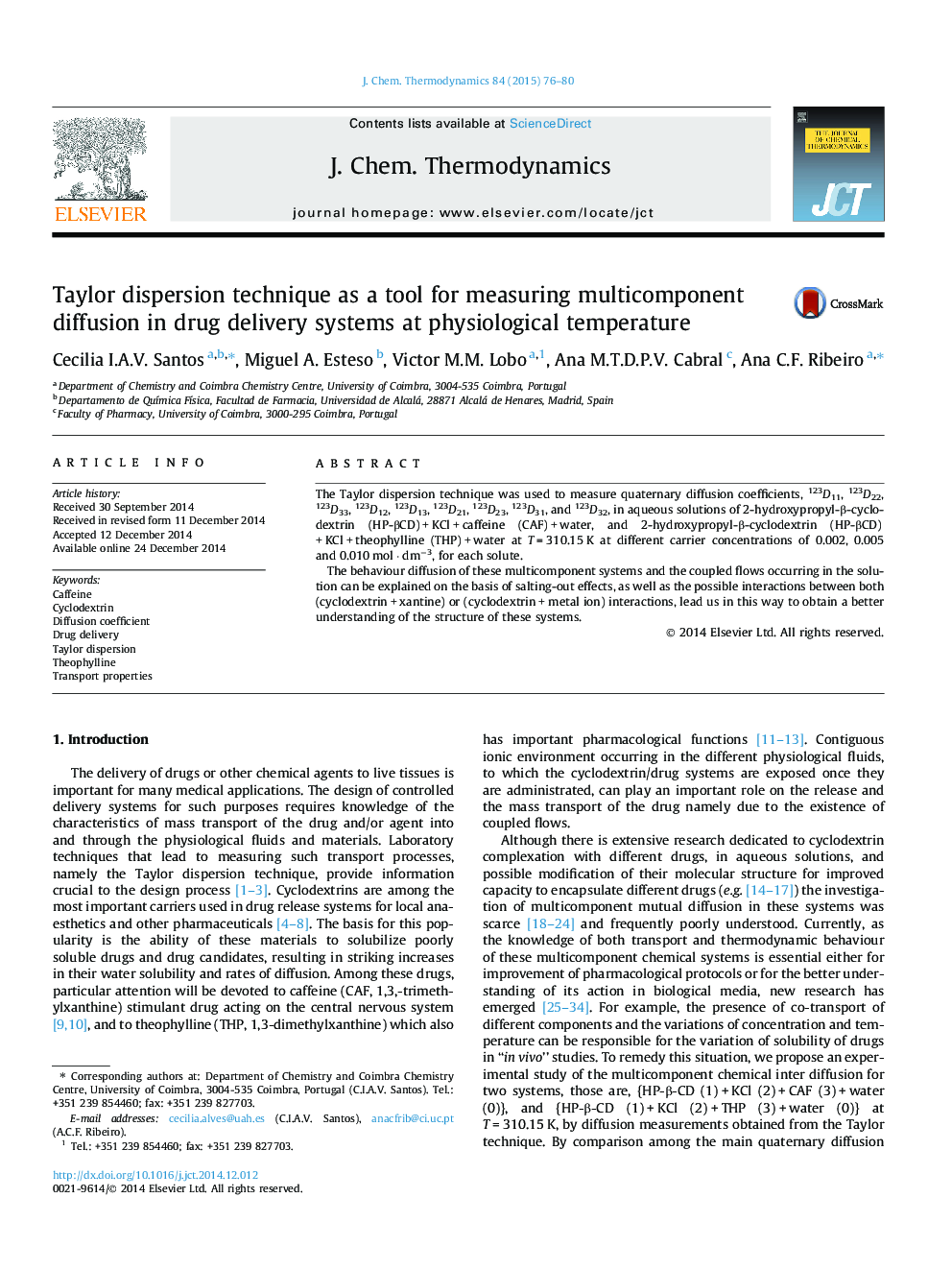| Article ID | Journal | Published Year | Pages | File Type |
|---|---|---|---|---|
| 215191 | The Journal of Chemical Thermodynamics | 2015 | 5 Pages |
•Diffusion of the systems containing potassium chloride, xantine and cyclodextrin.•Influence of potassium chloride in the diffusion of theophylline.•Coupled diffusion as indicated by cross-diffusion coefficients.
The Taylor dispersion technique was used to measure quaternary diffusion coefficients, 123D11, 123D22, 123D33, 123D12, 123D13, 123D21, 123D23, 123D31, and 123D32, in aqueous solutions of 2-hydroxypropyl-β-cyclodextrin (HP-βCD) + KCl + caffeine (CAF) + water, and 2-hydroxypropyl-β-cyclodextrin (HP-βCD) + KCl + theophylline (THP) + water at T = 310.15 K at different carrier concentrations of 0.002, 0.005 and 0.010 mol · dm−3, for each solute.The behaviour diffusion of these multicomponent systems and the coupled flows occurring in the solution can be explained on the basis of salting-out effects, as well as the possible interactions between both (cyclodextrin + xantine) or (cyclodextrin + metal ion) interactions, lead us in this way to obtain a better understanding of the structure of these systems.
